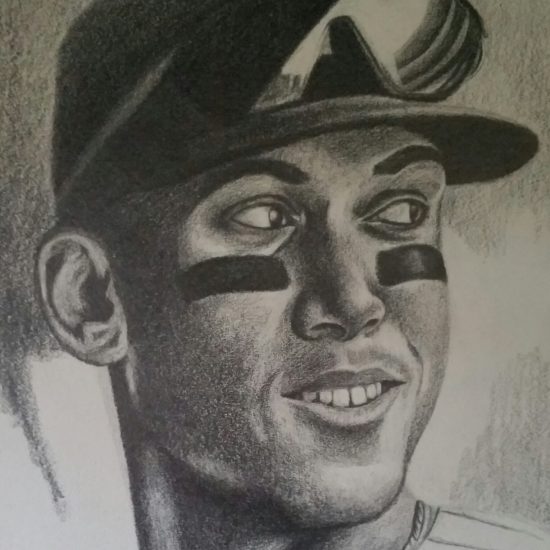This is a sponsored post from Underdog Fantasy. Sign up today with promo code PITCHERLIST to get 100% of your deposit matched up to $100.
One of the many contests offered on Underdog, Best Ball is somewhere in between DFS and season-long in that you’re not drafting a new team every day, and you don’t have to agonize over starts and sits. It’s a great format if you’d rather not commit to managing a season-long team, yet still find yourself eager to draft a roster. There’s no waiver wire or injured list to manage. Once you draft your team, you’re done- that’s it. Underdog offers different-sized Best Ball contests too from small six-team leagues to large, multi-entry tournaments with big prizes at the top.
Scoring
Rosters consist of three IF, three OF, one FLEX, three pitchers, and ten bench players. In Best Ball, your highest-scoring roster is tallied every week. Everything is added up at the end of the season, with the top three teams typically finishing in the money in twelve-team contests.
Note that Underdog lists total point projections for every player, but here I’ll refer to the projections on Pitcher List.
Rounds 1-3
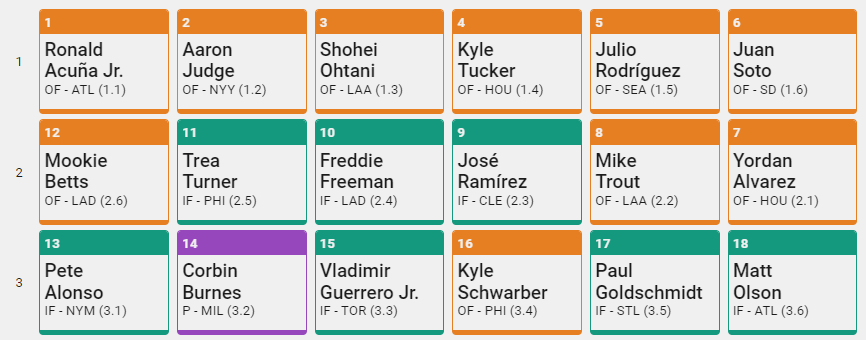
I began our fourth and final Best Ball draft of the preseason by taking Shohei Ohtani third overall. In our previous draft, which was also a six-teamer, I picked last and went with Ohtani and Mookie Betts. But afterward, I felt that OF wasn’t as big of a priority as it seemed in 12-teamers, so here I took Freddie Freeman instead of Betts in the second. He might be a little undervalued in this format. According to the PL projections, Freeman and Ronald Acuña Jr. are basically neck-and-neck in total points. Nick Pollack had the fourth pick and started off with Kyle Tucker.
In the third round, Corbin Burnes was the first pitcher off the board. That was a slight deviation from our previous six-teamer, where Gerrit Cole was the first pitcher drafted at pick 17. Burnes left Vladimir Guerrero Jr. as an easy decision in the third.
Rounds 4-8
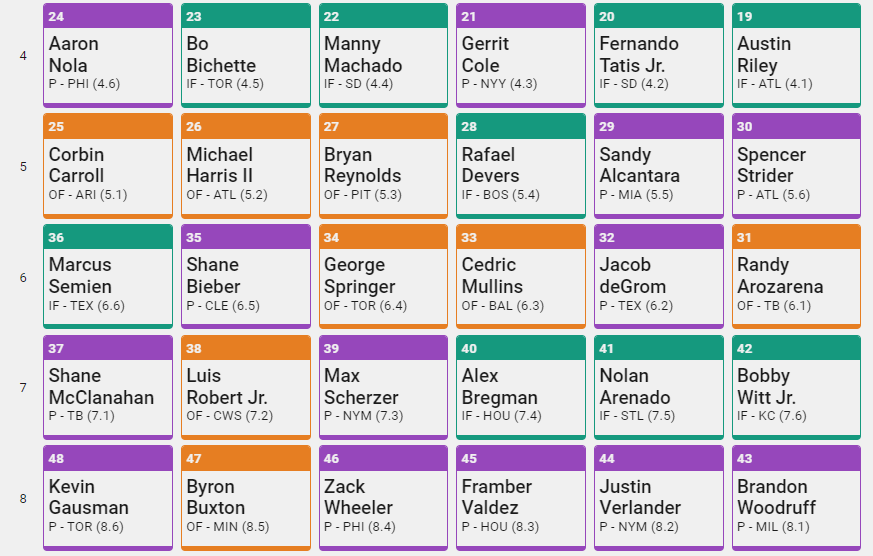
The fourth round was much tougher for me. I did think about Gerrit Cole, but Team four snatched him up, and left me eyeing Manny Machado, Rafael Devers, and Bo Bichette. They’re all projected within a few points of each other so I basically fell in line and went with Machado by the listed rankings. I know, not creative on my part. But it’s one of those situations where if I played it out ten different times, I might have drafted each of them three times before flipping a coin the tenth time. Yes, I know it doesn’t work like that, but still.
Part of the reason I selected a second IF in the fourth was that I guessed that Bryan Reynolds might be available in the fifth. In category leagues, Reynolds seems like a boring pick, but in points formats, he’s valuable. The projections have him about 100 total points ahead of Michael Harris II with even more of a lead over Corbin Caroll.
The concentrated player pool in a six-teamer mitigates the risk a bit less, so I really like this format for Jacob deGrom. But he was gone two picks ahead of me in the sixth, so instead, I grabbed another piece of the Blue Jays’ terrific lineup with their leadoff man, George Springer.
Max Scherzer was my first pitcher and the ninth off the board in round seven. I doubled down with Zack Wheeler in the eighth. Fun fact: Wheeler posted the third-highest PLV among all SPs last year with a minimum of 100 IP. Shane McClanahan and Shohei Ohtani were tied at the top. Scherzer was 43rd on that list. Upon further review, I might have been better off going with Mclanahan in the sixth and then another bat in the seventh instead of Scherzer.
Rounds 9-14
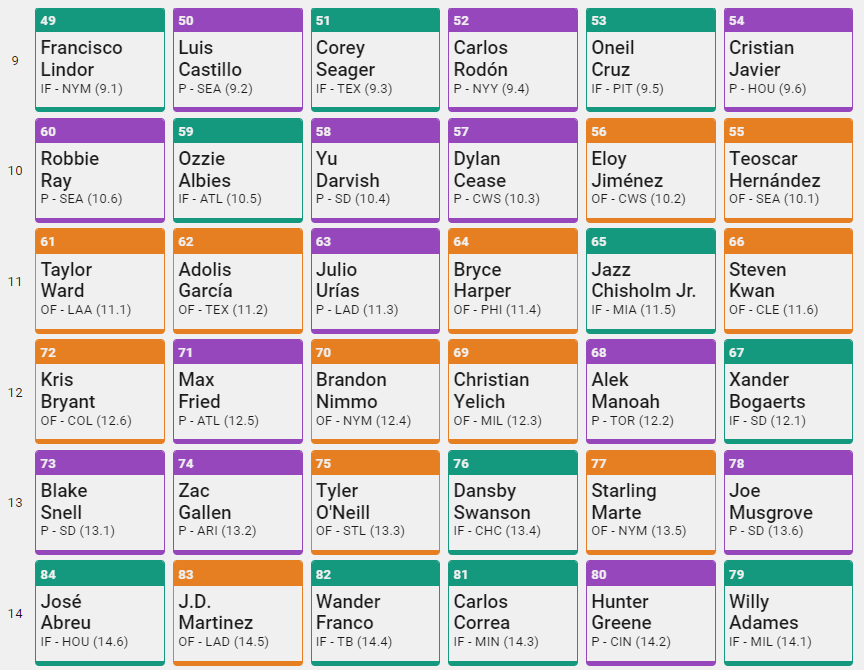
I considered Dylan Cease and also Carlos Rodón who might not miss that much time. But, I couldn’t pass up the value of Corey Seager as my seventh hitter. Last year’s .772 OPS was a career-low if you exclude the 26 games he played in 2018, but you don’t have to look all that hard to see a resurgence. Last year, he was one of just 17 players that PLV tracked with a Decision Value of 70 or greater. He also had an xwOBA in the 95th percentile.
Yu Darvish finished second behind Framber Valdez in Quality Starts last year so he seemed like an easy choice as my third SP in the tenth. The next pick, Julio Urías, was one I might’ve taken back if we played this out again. Bryce Harper would have been a fun dice roll in the eleventh, especially in a shallow format like this. In that scenario, I would’ve gone with Max Fried in the eleventh instead of Brandon Nimmo.
Although he was terrific in the second half last season, I’ve faded Blake Snell in our drafts. He went in the 13th here, that’s not a bad spot for him at all, but I just find him to be a frustrating player to roster in leagues that reward QS. Five picks later, team six ended the 13th with what looked like a great value in Joe Musgrove.
For as much as I’ve avoided Snell, I’ve been the complete opposite with Tyler O’Neill. His volatility fits this format well and he should have some big weeks hitting in a loaded Cardinals lineup.
Rounds 15-20
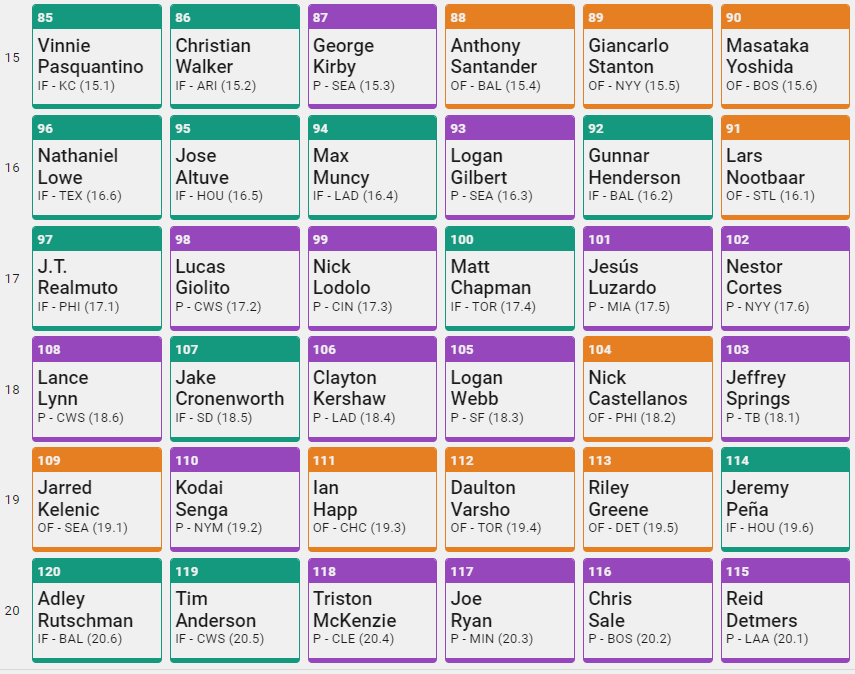
I rounded out my staff with two young upside arms in George Kirby and Nick Lodolo. Kirby’s efficiency stuck out last year. His 4.1% BB rate would’ve placed him third ahead among qualified SPs, just of Justin Verlander (4.4%). Lodolo wasn’t quite as efficient in his rookie season but the strikeouts were there in spades (29.7%). If he improves his command just a little bit in year two, it’s not hard to imagine him as a potential top-25 SP.
None of the hitters really stuck out to me after Lodolo, so I went with Clayton Kershaw as my seventh SP. Most projections have him at about 120 IP, dragging him down in rankings. But when he pitches, he’s still among the best. Last year among SPs with a minimum of 100 IP, he ranked 23rd in PLV, tied with Dylan Cease and just behind Justin Verlander.
Full disclosure, I goofed on my last pick, wasn’t quick enough, and was auto-picked, Triston McKenzie. The news about his injury was out already. I wanted Joe Ryan but Nick Pollack took him right before me and left me scrambling. I know, I should have expected that scenario.
And then I realized that I might be better off looking at hitters since I already had seven SPs. By the time I had Rowdy Tellez in my sights, time was up. So, yeah, bad job by me. Regardless, McKenzie now seems at best like a tenuous late-round IL stash in traditional formats. But here in a six-team Best Ball league, there were a ton of other names to pick from. Hunter Renfroe was another batter still on the board that stuck out. For pitchers, Charlie Morton was the name still on the board that popped out the most.

